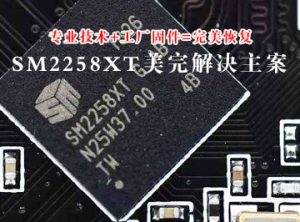LiteOn CA3-8D256-Q11 / CA3-8D512-Q11 PCIe NVMe SSD Firmware Update固件 硬盘修复,硬盘维修
LiteOn CA3-8D256-Q11_CA3-8D512-Q11 W3WWY_ZPE

LiteOn CA3-8D256-Q11_CA3-8D512-Q11
笔记: 建议您备份系统中的数据并关闭所有打开的应用程序。如果不是台式机,还建议连接电源线,并断开所有外部存储设备的连接。 通过Windows实用程序进行固件升级 程序 1.转到解压软件包的文件夹。 2.右键单击该文件,然后选择“以管理员身份运行”以管理员权限运行该文件。 3.单击是继续。 4.从下拉列表中选择固态驱动器,然后单击“更新”以开始更新过程。 固件完成后,将显示一个弹出窗口。 5.单击确定继续。 显示一条消息,提示您重新引导系统。关闭所有打开的应用程序并保存您的数据。 6.单击“是”重新启动系统。 打开系统电源时,将应用新的固件。要确认固件更新是否成功,请重复从1到3的升级过程。当前的固件版本和可用的更新显示在相应的固态驱动器下。 通过DOS实用程序进行固件升级 使用可启动的USB驱动器 注意:Rufus不是Dell认证的软件。 Dell不支持与此软件有关的问题。 1.从https://rufus.ie下载Rufus。 Rufus是一个独立程序,不需要安装。 2.连接一个空的USB驱动器,然后打开Rufus程序。 USB驱动器至少应为4 GB。 3.选择设备作为连接的USB驱动器。 4.从“引导”选择下的下拉列表中选择“磁盘”或“ ISO映像”。 5.单击选择,然后浏览至固件实用程序中的DOS文件夹以选择ISO映像文件。 6.选择ISO映像文件后,单击“开始”。 Rufus提示警告消息,表明USB驱动器中的所有数据都将被破坏。 7.单击确定继续。 ISO映像文件开始复制到USB驱动器。此过程可能需要几分钟。 8.状态显示为READY时,关闭Rufus并卸下USB驱动器。 9.将USB驱动器插入需要固件更新的系统。 10.从USB驱动器引导系统。 11.出现提示时,按Enter键继续。 12.阅读显示的警告消息,然后按Y继续。 更新工具会自动检测系统上存在的固态驱动器。 13.按Y进行更新。 14.更新完成后,重新引导系统。 要确认固件更新是否成功,请打开设备管理器->打开磁盘驱动器->右键单击SSD->单击属性->从“详细信息”选项卡下的列表中选择硬件ID,然后检查固件版本。 使用光盘 1.进入DOS文件夹。 2.将空白CD插入CD / DVD R / W驱动器。 3.将DOS文件夹中存在的ISO映像刻录到CD中。 4.将CD插入需要固件更新的系统的CD / DVD驱动器中。 5.从CD / DVD驱动器引导系统。 6.选择系统引导进入DOS后的目标驱动器。 更新工具会自动检测系统上存在的固态驱动器。 7.阅读显示的警告消息,然后按Y继续。 8.更新完成后,从CD / DVD驱动器中取出CD,然后重新引导系统。 要确认固件更新是否成功,请打开设备管理器->打开磁盘驱动器->右键单击SSD->单击属性->从“详细信息”选项卡下的列表中选择硬件ID,然后检查固件版本。
Note:
You are advised to back up the data in the system and close all open applications. It is also recommended to connect the power cable if it is not a desktop and disconnect all external storage devices.
Firmware upgrade through the Windows utility
Procedure
1. Go to the folder where you have unzipped the package.
2. Right-click on the file and select Run as administrator to run the file with administrator privilege.
3. Click Yes to proceed.
4. Select the solid-state drive from the drop down and click Update to begin the update process.
After the firmware completes, a popup window is displayed
5. Click OK to continue.
A message prompting to reboot the system is displayed. Close all open applications and save your data.
6. Click Yes to reboot the system.
New firmware is applied when you power on the system. To confirm whether the firmware update was successful, repeat the upgrade procedure steps from 1 to 3. Present firmware version and the available update is displayed under the respective solid-state drive.
Firmware upgrade through the DOS utility
Using Bootable USB drive
Note: Rufus is not a Dell certified software. Dell does not support issues regarding this software.
1. Download Rufus from https://rufus.ie. Rufus is a stand-alone program and does not require installation.
2. Connect an empty USB drive and open the Rufus program. The USB drive should be of at least 4 GB.
3. Select Device as the connected USB drive.
4. Choose Disk or ISO image from the drop-down list under Boot selection.
5. Click SELECT and browse to the DOS folder in firmware utility to choose the ISO image file.
6. Click START once the ISO image file is selected.
Rufus prompts a warning message that all the data in the USB drive will be destroyed.
7. Click OK to proceed.
The ISO image file starts copying to the USB drive. This process can take several minutes.
8. Close Rufus and remove the USB drive once the status shows READY.
9. Plug-in the USB drive into the system that requires the firmware update.
10. Boot the system from the USB drive.
11. Press Enter to proceed when prompted.
12. Read the warning message that is displayed and press Y to proceed.
The update tool automatically detects the solid-state drives present on the system.
13. Press Y to proceed with the update.
14. Reboot the system after the update completes.
To confirm whether the firmware update was successful, open Device Manager -> open Disk drives -> right-click the SSD -> click Properties -> choose Hardware Ids from the list under Details tab and check the firmware version.
Using a CD
1. Go to the DOS folder.
2. Insert a blank CD into CD/DVD R/W drive.
3. Burn the ISO image that is present in the DOS folder into the CD.
4. Insert the CD into the CD/DVD drive of the system that requires the firmware update.
5. Boot the system from the CD/DVD drive.
6. Select the drive that is targeted after the system boots into DOS.
The update tool automatically detects the solid-state drives present on the system.
7. Read the warning message that is displayed and press Y to proceed.
8. When the update finishes, remove the CD from your CD/DVD drive and reboot the system.
To confirm whether the firmware update was successful, open Device Manager -> open Disk drives -> right-click the SSD -> click Properties -> choose Hardware Ids from the list under Details tab and check the firmware version.




